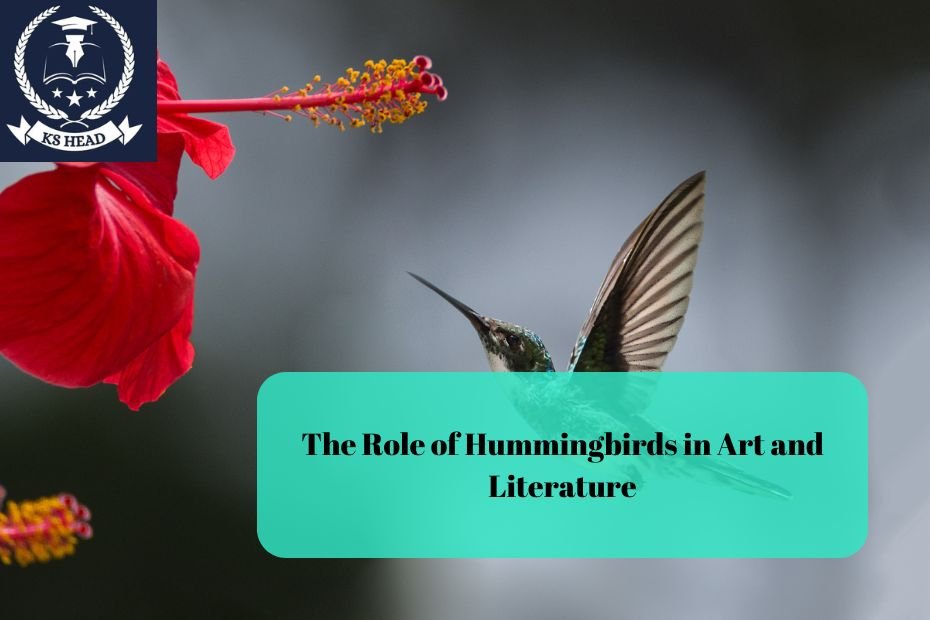Hummingbirds are extraordinary creatures that have captivated the human imagination for centuries. Their vibrant colors, rapid movements, and unique behaviors have inspired countless artists and writers to incorporate them into their works. This article explores the multifaceted role of hummingbirds in art and literature, highlighting their symbolic meanings, representations, and contributions to cultural narratives. We will delve into various artistic mediums, literary genres, and historical contexts to appreciate how these tiny birds have influenced creative expression.
The Symbolism of Hummingbirds
1. Transformation and Change
In many cultures, hummingbirds symbolize transformation and change. Their ability to hover and fly in any direction represents adaptability and resilience. In literature, they often embody the theme of personal growth, encouraging characters to embrace change.
2. Joy and Happiness
Hummingbirds are also associated with joy and happiness due to their lively nature. Their presence can evoke feelings of delight, and they are often depicted in art and literature as messengers of positivity and good fortune.
3. Love and Affection
In various cultures, hummingbirds symbolize love, affection, and the fleeting nature of relationships. Their courtship behaviors, such as elaborate aerial displays, are often romanticized in art and poetry, making them a fitting emblem for love stories.
4. Nature and the Environment
Hummingbirds are integral to many ecosystems as pollinators. They symbolize the delicate balance of nature, often serving as a reminder of the need to protect our environment. This symbolism resonates strongly in literature, particularly in works focusing on conservation and environmental themes.
Hummingbirds in Art
1. Visual Arts
Painting
Hummingbirds have long been a subject of fascination for painters. Their vibrant colors and dynamic movements inspire many artists to capture their essence on canvas. Notable examples include:
- John James Audubon: In his iconic works, Audubon meticulously documented various bird species, including hummingbirds. His paintings highlighted their beauty and ecological significance, influencing generations of naturalists and artists.
- Frida Kahlo: Kahlo often incorporated hummingbirds into her artwork as symbols of love and the spirit. Her painting “Self-Portrait with Thorn Necklace and Hummingbird” showcases the bird as a representation of hope and resilience amidst suffering.
Photography
Photography has provided a new medium for capturing the fleeting beauty of hummingbirds. Photographers like David W. H. Hsiao and Steve Winter have focused on these birds, showcasing their vibrant colors and intricate behaviors in stunning detail. These photographs not only celebrate the beauty of hummingbirds but also serve to raise awareness about their conservation.
2. Sculpture
Hummingbirds have also inspired sculptors to create stunning three-dimensional representations. Artists such as David Rogers and Patrick Dougherty have crafted whimsical sculptures of hummingbirds using natural materials, blending art with the environment and emphasizing the importance of nature.
3. Textiles and Craft
In many indigenous cultures, hummingbirds are depicted in textiles and crafts. For instance, the Huichol people of Mexico use vibrant beadwork and yarn art to represent hummingbirds, imbuing their creations with cultural significance and spiritual meaning. These crafts serve as a means of storytelling, connecting the community with their environment.
Hummingbirds in Literature
1. Poetry
Hummingbirds often appear in poetry, where their delicate nature and vibrant colors serve as powerful metaphors.
Symbolic Interpretations
- Pablo Neruda: In his poem “The Hummingbird,” Neruda captures the beauty and ephemeral nature of life through the imagery of a hummingbird. The bird represents fleeting moments of joy and the fragility of existence.
- Mary Oliver: In her poem “Hummingbird,” Oliver reflects on the wonder of nature and the interconnectedness of all living things. The hummingbird serves as a reminder of the beauty in the small details of life.
2. Fiction
Hummingbirds are often woven into fictional narratives, serving as symbols of transformation, love, and resilience.
Notable Works
- “The Hummingbird’s Daughter” by Luis Alberto Urrea: This novel tells the story of a young girl who discovers her identity and purpose, paralleling the transformative journey of hummingbirds. The bird symbolizes her growth and connection to her heritage.
- “The Secret Life of Hummingbirds” by Gary W. Morrow: This fictional work blends fact and fiction, exploring the lives of hummingbirds through the eyes of a young protagonist. It emphasizes the importance of conservation and appreciation for nature.
3. Children’s Literature
Hummingbirds frequently appear in children’s literature, often as characters that teach important life lessons.
Engaging Young Readers
- “Hummingbird” by Nicola Davies: This beautifully illustrated book introduces young readers to the world of hummingbirds, emphasizing their unique characteristics and role in nature.
- “Hummingbird House” by Patricia Polacco: In this story, the hummingbird serves as a symbol of hope and perseverance, teaching children about the importance of kindness and resilience.
Cultural Perspectives on Hummingbirds
1. Native American Beliefs
In many Native American cultures, hummingbirds are revered as spiritual messengers. They are often associated with healing, love, and joy. Various tribes celebrate the hummingbird in their myths and stories, highlighting its significance in their cultural narratives.
2. Latin American Folklore
In Latin American folklore, hummingbirds are often depicted as symbols of resurrection and renewal. The Aztecs believed that hummingbirds were the reincarnated souls of fallen warriors, embodying courage and strength. This symbolism continues to inspire artists and writers in the region.
3. Asian Cultures
In some Asian cultures, hummingbirds represent happiness and good fortune. They are often featured in traditional paintings and crafts, symbolizing love and prosperity. Their presence is thought to bring joy and positivity to homes and communities.
Hummingbirds and Conservation
1. Raising Awareness Through Art and Literature
As environmental issues become increasingly pressing, many artists and writers use hummingbirds as symbols to raise awareness about conservation. By highlighting the beauty and ecological importance of these birds, they inspire audiences to protect their habitats and promote biodiversity.
2. Community Engagement
Art and literature can foster community engagement and education regarding hummingbird conservation. Workshops, exhibitions, and readings can encourage individuals to take action, whether by creating hummingbird-friendly gardens or supporting local conservation efforts.
3. Funding and Support for Conservation Efforts
Many artists donate proceeds from their work to conservation organizations focused on protecting hummingbirds and their habitats. By doing so, they contribute to the sustainability of these remarkable birds and their ecosystems.
Conclusion
Hummingbirds have played a significant role in art and literature, serving as symbols of joy, transformation, and the delicate balance of nature. From paintings and sculptures to poetry and fiction, these captivating creatures inspire creative expression while raising awareness about conservation. Their vibrant colors and unique behaviors resonate with audiences, encouraging appreciation for the natural world. As we continue to explore and celebrate the role of hummingbirds in art and literature, we also strengthen our commitment to protecting these remarkable birds and their habitats for future generations.
FAQs
1. Why are hummingbirds so popular in art and literature?
Hummingbirds are popular due to their vibrant colors, unique behaviors, and symbolism of joy and transformation, which resonate with artists and writers.
2. What do hummingbirds symbolize in different cultures?
In various cultures, hummingbirds symbolize love, happiness, transformation, and resilience, reflecting their significance in folklore and mythology.
3. How can hummingbirds be protected through art and literature?
Art and literature can raise awareness about conservation, encourage community engagement, and inspire action to protect hummingbird habitats.
4. Who are some famous artists known for their work featuring hummingbirds?
Notable artists include John James Audubon and Frida Kahlo, who have depicted hummingbirds in their artwork, celebrating their beauty and significance.
5. What is the role of hummingbirds in ecosystems?
Hummingbirds are important pollinators, helping to fertilize plants and maintain the balance of ecosystems, which is crucial for biodiversity.

